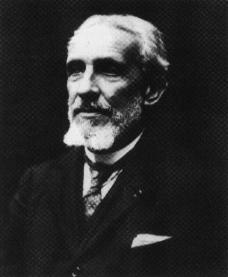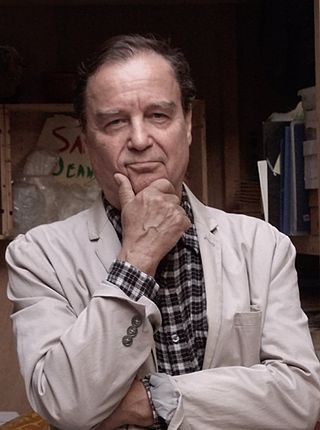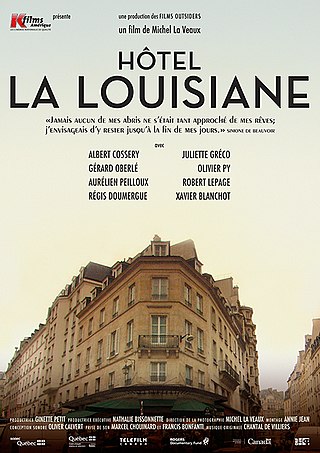
Serge Gainsbourg was a French singer-songwriter, actor, composer, and director. Regarded as one of the most important figures in French pop, he was renowned for often provocative releases which caused uproar in France, dividing public opinion. His artistic output ranged from his early work in jazz, chanson, and yé-yé to later efforts in rock, zouk, funk, reggae, and electronica. Gainsbourg's varied musical style and individuality make him difficult to categorise, although his legacy has been firmly established and he is often regarded as one of the world's most influential popular musicians.

Claude Henri Jean Chabrol was a French film director and a member of the French New Wave group of filmmakers who first came to prominence at the end of the 1950s. Like his colleagues and contemporaries Jean-Luc Godard, François Truffaut, Éric Rohmer and Jacques Rivette, Chabrol was a critic for the influential film magazine Cahiers du cinéma before beginning his career as a film maker.

Passy is an area of Paris, France, located in the 16th arrondissement, on the Right Bank. It is adjacent to Auteuil to the southwest, and Chaillot to the northeast.
Édouard Ruault, better known as Eddie Barclay, was a French record producer whose singers included Jacques Brel, Dalida and Charles Aznavour. He founded record label Barclay.
Pierre Michelot was a French jazz double bass player and arranger.

Édouard-Alfred Martel, the 'father of modern speleology', was a world pioneer of cave exploration, study, and documentation. Martel explored thousands of caves in his native France and many other countries, popularised the pursuit of cave exploration, introduced the concept of speleology as a distinct area of scientific study, maintained an extensive archive, and in 1895 founded Société de Spéléologie, the first organisation devoted to cave science in the world.
Jazz music has been popular in France since the 1920s. Its international popularity peaked in the 1930s, and it has been continually enjoyed since.

The Café des 2 Moulins is a café in the Montmartre area of Paris, located at the junction of Rue Lepic and Rue Cauchois. It takes its name from the two nearby historical windmills, Moulin Rouge and Moulin de la Galette. The interior consists of a bar area and multiple small tables.

Paul Misraki was a French composer of popular music and film scores. Over the course of over 60 years, Misraki wrote the music to 130 films, scoring works by directors like Jean Renoir, Claude Chabrol, Jacques Becker, Jean-Pierre Melville, Jean-Luc Godard, Henri-Georges Clouzot, Orson Welles, Luis Buñuel and Roger Vadim.
René Urtreger is a French bebop pianist.
Roger Guérin was a French jazz trumpeter and singer.
The Cavern Club at 10 Mathew Street, in Liverpool was the venue where the Beatles' UK popularity started. John Lennon, Paul McCartney, George Harrison and Pete Best were first seen by Brian Epstein at the club. Epstein eventually became their manager, going on to secure them a record contract. Best was replaced by Ringo Starr on 16 August 1962, which upset many Beatles fans. After taunts of, "Pete forever, Ringo never!", one agitated fan headbutted Harrison in the club.

The Cavern Club is a music venue on Mathew Street, Liverpool, England.

Christian Azzi was a jazz pianist. He studied piano at the Schola Cantorum de Paris. He discovered jazz music during World War II, specially through recordings made by V-Disc for the American soldiers.
Le Chat Qui Pêche is a Parisian jazz club and restaurant founded in the mid-1950s, located in a cellar in rue de la Huchette in the Latin Quarter, on the left bank of the Seine.

Music in the city of Paris, France, includes a variety of genres, from opera and symphonic music to musical theater, jazz, rock, rap, hip-hop, the traditional Bal-musette and gypsy jazz, and every variety of world music, particularly music from Africa and North Africa. such as the Algerian-born music known as Raï. Leading musical institutions include the Paris Opera, the Orchestre de Paris, and the Paris Conservatory, the first state music conservatory in Europe. The Cité de la Musique at La Villette is home of the new Paris Symphony Hall, the Conservatory, a museum of musical instruments, and Le Zenith, a major venue for popular music. Many of the churches in Paris have magnificent historic organs, and often host concerts. The city is also known for its music halls and clubs.

Jean-Max Albert is a French painter, sculptor, writer, and musician. He has published theory, books on artists, and a collection of poems, plays and novels inspired by quantum physics. He perpetuated experiments initiated by Paul Klee and Edgar Varèse on the transposition of musical structures into formal constructions. Albert has also created environmental sculptures using plants to create architecture.

Hotel La Lousiane is a Parisian hotel located at the heart of Saint-Germain-des-Prés at the intersection of rue de Buci and rue de Seine in the sixth arrondissement. It has a main entrance on 60, rue de Seine and a side entrance on 27 rue de Buci. It sits at the crossroad between four central lines: the Passarella des Arts (N), the Luxembourg Garden, (S), rue St Guillaume, (W) and place St Michel, (S). It is most associated with jazz musicians of the 1950s and 1960s. Oscar Peterson, Miles Davis, Bud Powell, Max Roach, Dizzy Gillespie, Art Blakey, Billie Holiday, Lester Young and Charlie Parker all stayed at the hotel. In the early 1960s, Powell and his wife Buttercup resided at the hotel for a long period.

Hiram's Tomb is a large limestone sarcophagus and pedestal located approximately 6 km southeast of Tyre, Lebanon, near the village of Hanaouay on the road to Qana.













